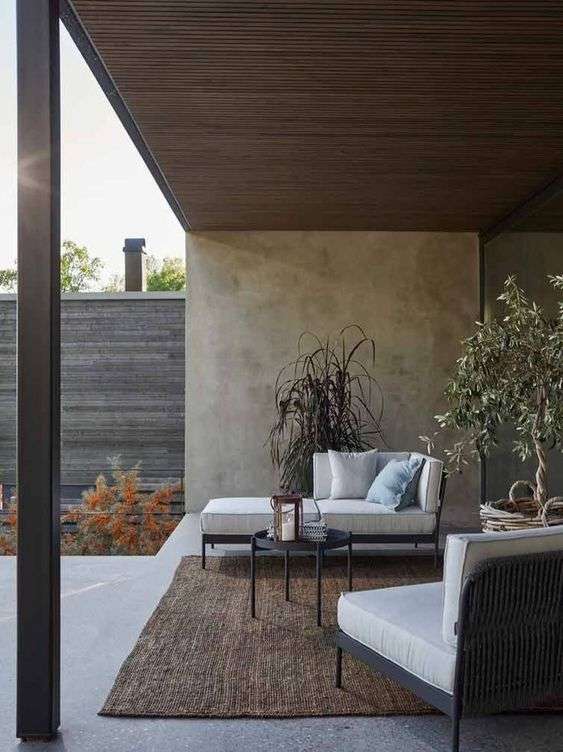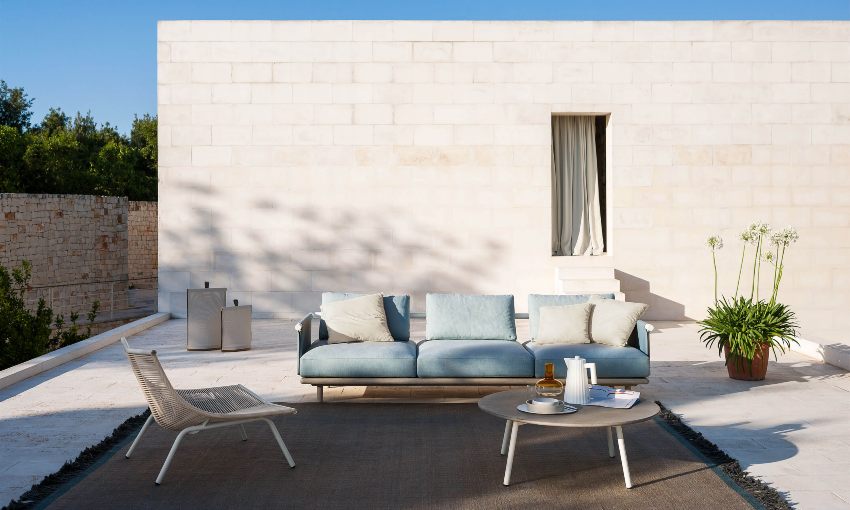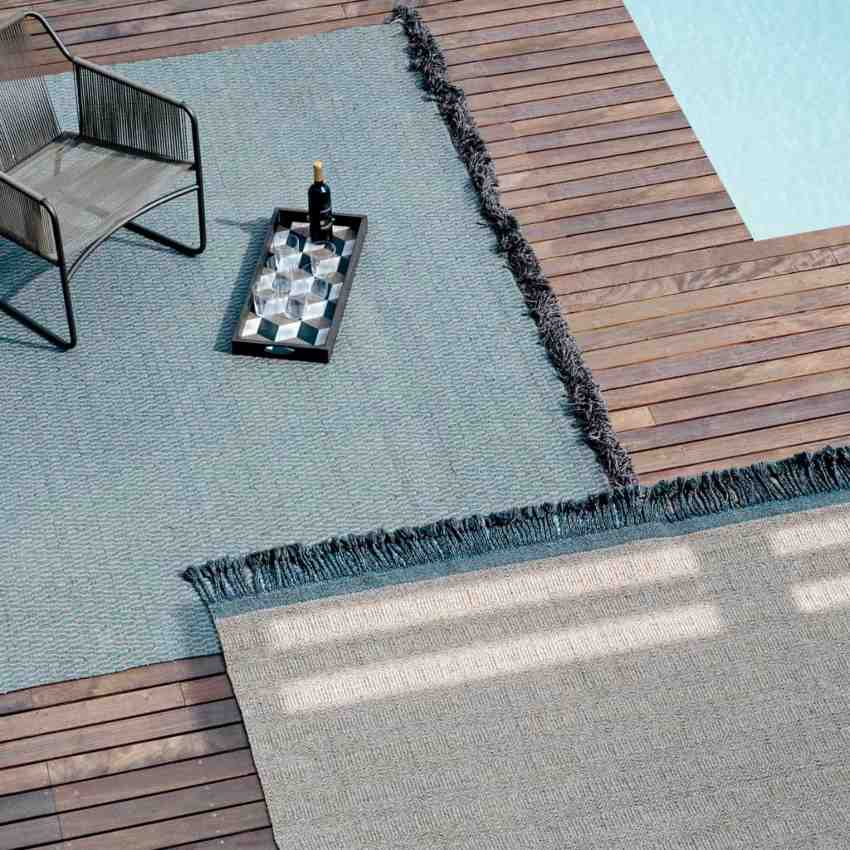Material, shape and color: what characteristics do outdoor rugs have?

Against dirt but not only
From the classic doormat that sits in front of the front door to large rugs for terraces, balconies and patios: if once the rug was only the indoor rug, perhaps important and sought after for the living room, now, especially since there is a greater need to experience the outdoors, now outdoor rugs are becoming a must-have addition. Their main function appears to be to prevent bringing dirt into the house from spaces where people walk with their shoes, but, like everyone in the design world, they also have an aesthetic role.
Outdoor rugs in the new way of designing terraces and balconies
Indeed, more and more attention is being paid to decorating places such as gardens, balconies and terraces. The Coronavirus pandemic and the long months of not being able to go outside has affected the way people experience the outdoors: they spend quality time there, relaxing and even cooking, among sofas, umbrellas, kitchens and tables. Furniture is gradually being given more attention, and outdoor rugs then become part of a larger concept. Indeed, with their textures and colors, they can add an extra touch of personality to the terrace or part of it. They could also be useful to hide a floor or tiles that one does not like and does not want or can replace at that moment for a variety of reasons.

Materials: the peculiarities of synthetic ones and natural ones, from polypropylene to bamboo
The first distinction when choosing a carpet to be placed outdoors is that of materials. As a rule, they are divided between synthetic and natural. Beyond aesthetics, which is still fundamental, one should not forget that, like any piece of furniture to be placed outdoors, they will be exposed to the elements, rain and sun and therefore must be able to withstand them. You need something that knows how to be waterproof and dries fairly quickly after rain. With great attention to hygiene, many people want outdoor rugs that are also antimicrobial, capable of inhibiting the growth of bacteria, fungi, viruses and parasites.
Synthetic materials are generally made of polypropylene, nylon or polyester. They are all flame retardant, antibacterial, and often machine washable, functional features that should not be underestimated. Polypropene has an excellent ability to withstand the intensive passage of people, thus also suitable for commercial settings. Nylon is very strong while polyester is durable and holds stains such as oil. If you want something softer, along the lines of indoor carpets, there are acrylic materials. As for natural ones, there are jute, Seagrass or bamboo. While the first two are recommended for covered rooms, where they are not directly exposed to rain, bamboo is very elastic and durable, as well as original in appearance. Choosing a knotted rug will increase resistance, both to water and to substances such as chlorine and UV rays. It will also be easy to clean, another detail that should be taken into consideration.

Shapes and colors of outdoor rugs, an endless range of choices
In terms of aesthetics, today, as is the case with indoor carpets, there is a huge choice for outdoor rugs. For one thing, they come in different sizes, from small for small spaces up to very large. Shapes also range from square to rectangular, able to fit any context. For those who want to be daring, there are also round ones.
Keep in mind that there is a need to coordinate the rug with the rest of the decor. Do you want it to be understated or an element that is immediately noticed? There are solutions of every color and texture on the market. There are those with geometric shapes, those with patterns, with writing: give free rein to your imagination. As always, the key word is good taste. A solid color suits everything, with light colors giving the visual impression of enlarging the space.
Choose a top-notch woodworking shop.
We have over 50 years of experience!
Contact us!



